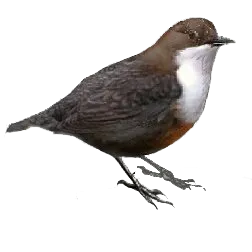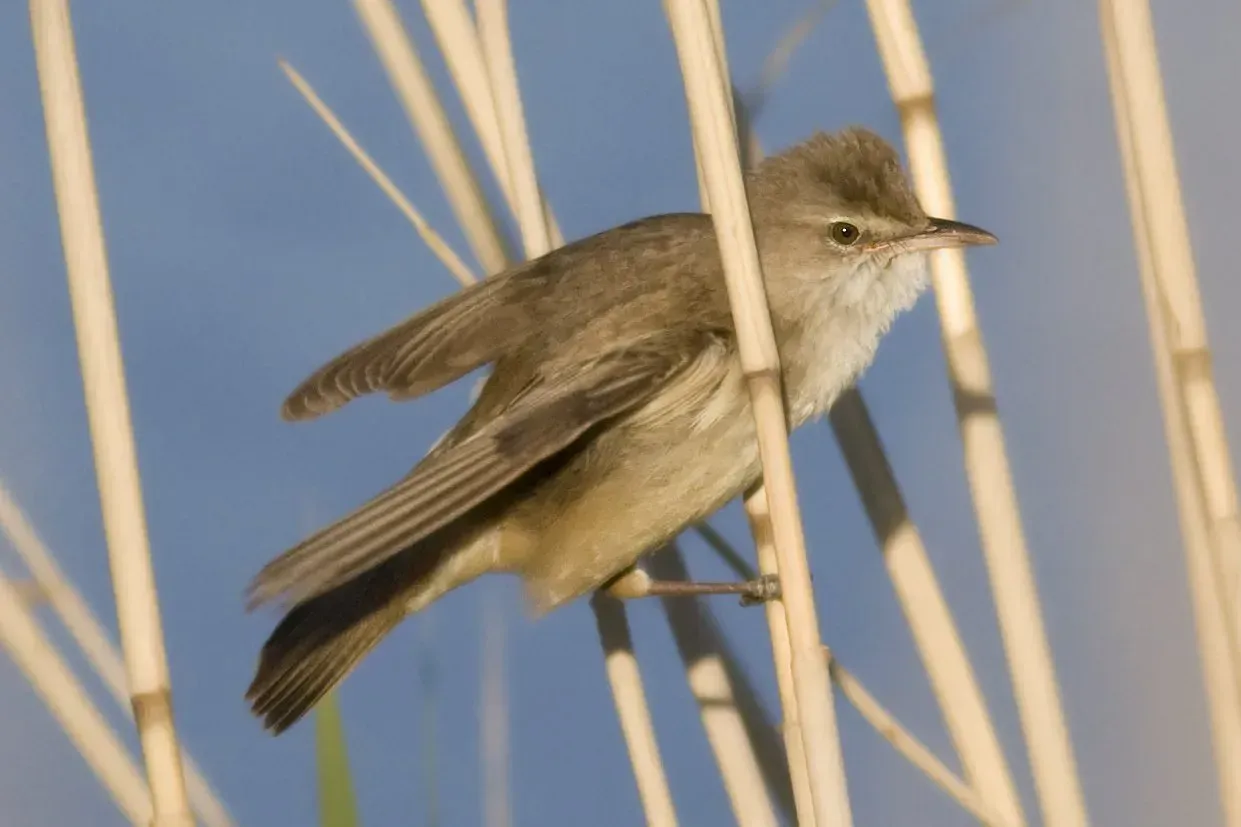Caistron
A Mile (1.6km) from the village of Hepple and 4 miles (6.4km) west of Rothbury is Caistron, a series of lakes lying next to the River Coquet, formed by the extraction of gravel, formerly taken from the river itself.
A varied habitat
Caistron nature reserve is formed by ex gravel workings on the River Coquet.The resultant wet pits have been restored into a nature reserve which can boast records for over 180 + species including Great Reed Warbler , Black-necked Grebe and Ferruginous Duck to name a few !. Consisting of a series of pools, reedbeds, Wader scrapes and shingle areas the reserve has been landscaped using a variety of restoration techniques. Alder, Willow and Conifers have been planted complementing the many trees which existed before extraction commenced.
Caistron is worth a visit at any time of the year with over 75 breeding species, a wealth of spring and Autumn passage visitors and many wintering species such as White-fronted Geese, Pintail and Smew.
Little grebe recorded by your host at Caistron
The variety and numbers of species attracted to Caistron is no accident.The extraction company have used many of the tried and tested methods employed at other man made reserves throughout Britain. For example, small stands of mature trees were circumnavigated during extraction of the gravel beds.This effectively left them standing as 'islands' when the land flooded, the isolation providing many ready made breeding habitat for wildfowl such as Mute Swan, Greylag Goose, Canada Goose, Shelduck,Teal, Mallard,Gadwall and Ruddy Duck.Other islands were created without tree cover providing ideal habitat for large colonies (1500+) of Black-headed Gull to develop, together with a few pairs of Lesser-black-backed gull.A bankside was constructed and this led to the arrival of a Sand Martin colony (now a large one on river bank).Other fresh water birds in evidence here are Moorhen,Coot,Goosander and Kingfisher.Access is via public footpath which runs from Little Tosson.
Many bays and peninsulas have been formed to maximise the shingle shoreline, thus providing ideal habitat for breeding waders such as Oystercatcher, Ringed Plover, Redshank and Common Sandpiper. Other breeding birds of note are Yellow Wagtail (now scarce) Sedge, Grasshopper and Willow Warbler. The wooded and scrub areas have Redstart and Whitethroat with the resident finches and Tits. Arguably the most important feature of the reserve are its extensive shallow feeding areas for wading birds. They can reach impressive numbers with Spotted Redshank, Greenshank, Green and Wood Sandpiper all regular, whilst fish in the lakes can attract passing Osprey.
All year;-Little Grebe, Heron, Mute Swan, Greylag Goose, Canada Goose, Wigeon, Teal, Mallard, Tufted Duck, Sparrowhawk, Possible Goshawk, Kestrel, Red-legged Partridge, Grey Partridge, Pheasant, Water Rail, Moorhen, Coot, Lapwing, Snipe ,Black-headed Gull, Woodpigeon, Collared Dove, Tawny Owl, Kingfisher, Great-spotted Woodpecker, Skylark, Meadow Pipit, Grey wagtail, Pied Wagtail, Dipper, Thrushes, Tits, Treecreeper, Corvids, Finches, Yellowhammer, Reed Bunting.
Spring-Summer;-Great-crested Grebe, Cormorant, Shelduck, Gadwall, Shoveler, Pochard, Goosander, Ruddy Duck, Osprey, Oystercatcher, Ringed Plover, Dunlin, Curlew, Redshank, Greenshank, Wood Sandpiper, Common Sandpiper, Black-headed Gull, Lesser-black-backed Gull, Herring Gull, Common Tern, Cuckoo, Swift, Sand Martin, House Martin, Swallow, Yellow Wagtail, Redstart, Whinchat, Wheatear, Grasshopper Warbler, Sedge, Garden and Willow Warbler, Chiffchaff, Spotted flycatcher.
Other records include;- Black Tern, Little-ringed Plover, Temmminck's Stint, Turtle Dove, Wryneck, Black-necked Grebe, Great Reed Warbler, Hobby, Marsh Harrier, Whimbrel and Red-backed Shrike.
Autumn- Winter;-Build up of post-breeding wildfowl, sometimes huge numbers. Hen Harrier, Peregrine and Merlin. Large concentrations of Lapwing and Golden Plover move downstream from upland breeding areas, joined by passage Ruff, Wood and Green Sandpiper, Curlew and Greenshank.
Winter has records for Bittern, Pink-footed Goose, Bean and White fronted goose, Pintail, Smew, Water Pipit, Great-grey Shrike and Snow Bunting.
Birds you may hear at Caistron
Caistron is best visited in April / May and during autumn migration. There is no longer access from the north side of the river coquet, however there is a footpath which skirts the south side of the lakes.Listen for the 'reeling' of Grasshopper warbler and the call of ringed plover and oystercatcher.



